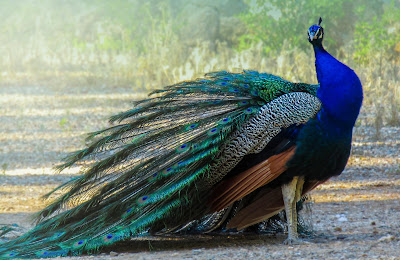The Order of Things
 |
| Google Images |
They first put the ark in their temple to share space with their god, Dagon (1 Samuel 5:2). On two separate occasions Dagon’s image ended up lying on the floor in front of the ark. The second time, the incident is reported this way: “…there was Dagon, fallen on his face on the ground before the ark of the Lord! His head and hands had been broken off and were lying on the threshold; only his body remained” (1 Samuel 5:4).
To make matters worse, the people of Ashdod, where the ark was taken, were inflicted with disease and it didn’t take a genius to determine that all these things had something to do with the God associated with Israel’s ark (5:7, 8). They moved the ark to Gath and then to Ekron and sent the population of those cities into panic mode. “God’s hand was very heavy…” say the Scriptures (5:11).
In chapter 6, the Philistines decide to return the ark to Israel, along with “gifts” which seem to represent their way of seeking to appease God and the Israelites. But once the cart containing the ark crossed the border the Israelites, particularly the residents of Beth Shemesh, learned the lesson that Eli’s sons needed to have learned—treat the things of God with respect. 1 Samuel 6:19 tells us “But God struck down some of the men of Beth Shemesh, putting seventy of them to death because they had looked into the ark of the Lord” (emphasis mine). The ark, as a symbol of God’s presence was to be handled according to the protocol set down by Moses during Israel’s journey through the desert. To look inside the ark was something only a certain few were allowed to do. The tablets that contained the Ten Commandments, Aaron’s rod that had grown leaves, and the container of manna, were not to be disturbed.
The people of Beth Shemesh were eager to unload the ark before anything else happened so sent word to the inhabitants of Kiriath Jearim and told them to come and collect it. Here, the people consecrated Eleazar to be the guardian of the box so that no further offense would be committed against something that God had declared sacred. But here, in 1 Samuel 7, we find an interesting statement. “It was a long time, twenty years in all, that the ark remained at Kiriath Jearim, and all the people of Israel mourned and sought after the Lord” (7:2). All of these events apparently triggered a spirit of repentance in the people of Israel. Samuel, now a grown man, stepped onto the scene again (7:3-6) and led the people into confession of sin and the renouncing of the idols and the worship of idols that they had adopted from their pagan neighbours. Out of this came the defeat of their enemies and a period of peace in the land.
We know that God doesn’t give His glory to anyone else. Worship is to be directed to Him and not to those things that represent Him. But at the same time, what represents Him is to be treated with respect. The end result of getting the order and the action correct is spiritual renewal and blessing.
The question hovers: What do I worship? How do I treat what represents God in my world? In all honesty most of us may have to admit that oftentimes our lives are just lightly brushed with “God” and much more heavily committed to the things or the ambitions that we cherish more dearly than we cherish Him.
But it is in the resolution of these questions that blessing lies—not the temporal blessings that we so often prefer, but the spiritual blessing of renewal and peace that only God can bring.



Comments
Post a Comment